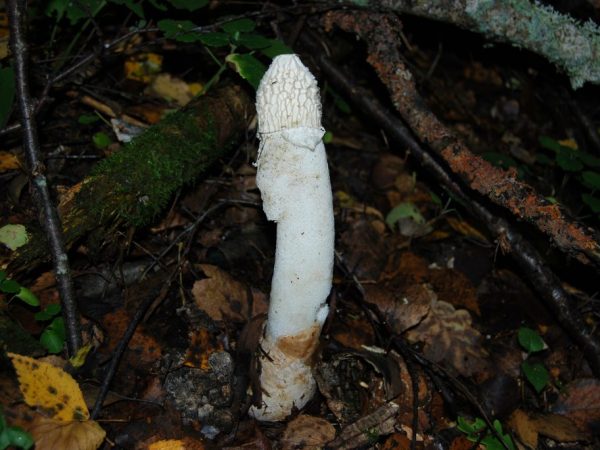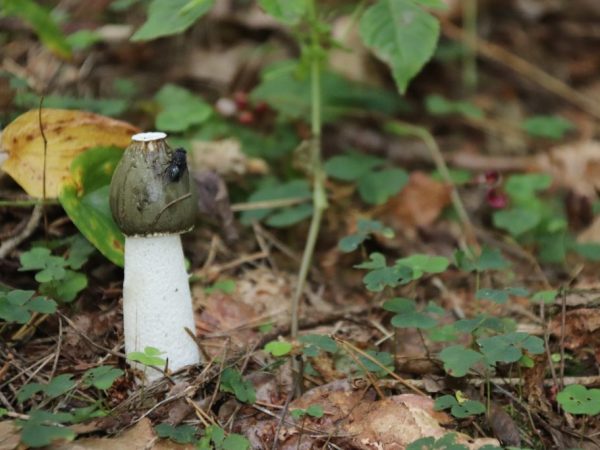How the Veselka mushroom grows
A high leg, a strange little body, an abundance of flies around and an unpleasant aroma ... Who would have thought that this nondescript mushroom with such a strange name - "jolly", "shameful", "damn egg" or "lady under a sheet", has a huge list of useful properties. Let's figure out where the veselka mushroom grows, what are its advantages over other medicinal mushrooms, and when is the best time to start collecting.

How Veselka mushroom grows
Beneficial features
The use of jellyfish in food turns out to have a whole range of useful properties, including medicinal ones:
- Promotes the resorption of oncological tumors and formations (abnormal, i.e. cancer cells are destroyed). The fungus contains a number of polysaccharides, which are converted into perforin (a substance that kills cancer cells);
- Veselka tincture is a good part of the treatment for infertility in both sexes;
- Accelerates tissue recovery after wounds, scratches and other injuries;
- Removes low-quality cholesterol from the human body;
- Reduces blood pressure (so be careful when applying if your blood pressure readings jump);
- Veselka is used in the treatment of herpes, flu, hepatitis and other dangerous diseases of various categories and forms of severity. It is worth noting that one cannot be treated with a single tincture of veselka. It has a wide range of useful actions, but they will not be enough for full therapy - this is a good adjuvant;
- Helps to strengthen the skeleton and improve the quality of joint therapy, which, accordingly, allows you to move faster even with problems with walking;
- Veselka helps to cope with infectious diseases and stimulates the human immune system. The fungus relieves inflammation of internal organs and even heals bedsores, various types of ulcers;
- According to traditional medicine, medicinal properties increase male potency. It is often harvested for use as a natural analogue of an aphrodisiac (due to the presence of phytosteroids in the body of the fungus);
- Helps to gain strength and tones the body with chronic fatigue and intense physical exertion.
- It is an anti-allergic agent.
Disadvantages of a medicinal mushroom
Veselka ordinary delights with its healing properties, but before collecting it, find out about the existing contraindications.
It is not advised to give tincture from the "shameful" to small children under the age of 5 years (especially with low resistance to diseases), women during pregnancy and lactation. The fact is that the composition of a useful mushroom includes strong organic substances.

Consult your doctor before treatment
Even adults are advised to consult with their doctor and carefully monitor the dose and schedule. You should not take the tincture of the "shameful" in case of individual intolerance to some components from its chemical composition.
Attention! It is strictly forbidden to increase the taken dose of the drug based on veselka.
Maturation features
The fungus reproduces by spores. They can be distinguished by their oval, roundish and elliptical shape.The hat grows and develops inside the soil, as it matures, it changes color to a darker one and reaches a size of 5-6 cm. The leg of the jellyfish grows up to 30 cm. In texture, it slightly resembles milky white foam.
Irina Selyutina (Biologist):
The young fruiting body at the beginning of its development is in the soil and resembles an egg of white, grayish or yellowish hue in shape. It is located on a white mycelial weight. Its average diameter is about 6 cm.The shell is presented in two layers:
- external, or exoperidium: membranous;
- internal, or endoperidium: gelatinous.
Under the shell, the asexual part of the fruiting body is formed - the receptacle (also called the "leg") in the form of a hollow cylindrical column with spongy (cavernous) walls. At its top, the spore-bearing part, the gleb, is formed and then isolated. It is often referred to as the "hat". The recipe can stretch up to 30 cm. At the same time, its growth rate is 5 mm in one minute. As it grows, it raises a black-greenish honeycomb gleb in the form of a cone-shaped cap with a small disc at the top. Soon, the gleb spreads into black-green mucus with basidiospores. This mass drips down to the ground, emitting an unpleasant odor that attracts flies.
The general development of the fungus lasts 2 months, the formation of fruiting bodies takes only a few hours.
Unfortunately, the shameful lives no more than 48 hours (you can find him from summer to mid-November). It looks like a gray, rounded jelly with a weight at the base. During the ripening period, a brownish or olive cap rises on the spongy stalk. An unpleasant odor is formed.
By the end of the second day of existence, an ordinary merry-go-round stops smelling, and after that it completely dissolves.
Many Mushroom pickers believe that a particularly high concentration of medicinal properties is in the shameful egg.
Where and how to find
Veselki ordinary grows throughout Russia. These mushrooms can be found both in mixed forests and in broadleaf forests, which means that most medicinal mushrooms can be found in the central part of the country. Sometimes it is found outside temperate latitudes. On the forums of mushroom pickers, it is sometimes said that veselka are found in the Far East, in Western Siberia, in the European North.
Irina Selyutina (Biologist):
You can collect the "shameful" from May until October. However, August is considered the best time. it is at this time that the peak of mycelium activity is observed in terms of the formation of young fruiting bodies. This means that it will be easier to find them.
It is best to choose sunny weather for searches, but do not forget that like other mushrooms, the "damn egg" loves rain and it is after them that they will grow in wet weather.
When collecting "eggs", you need to carefully dig out with your hands or with a small spatula (you can confiscate a child's scoop). If the mushroom has just begun to "hatch" - cut or pluck. However, despite the same spectrum of action, preference is usually given to the underground "egg". Collect them in a wide container lined with a soft cloth.
Veselki can act as a saprotroph. Then they grow or singly in dead trees, form real colonies. There are often families of 10 or more mushrooms near the stumps of spruce and oak. And at times they can form mycorrhiza with some shrubs, oak or beech.
Sometimes they can be found even within the city limits. If the climatic conditions are suitable, they can appear in city parks and squares. But you should not eat or insist on such mushrooms. They are susceptible to the harmful effects of carbon dioxide and car exhaust.
You can find mushrooms by the characteristic smell of rotting meat. This smell is very attractive to a number of flying insects. They are attracted by the chemical composition and scent of the mucus. Insects carry fungal spores on their paws. Such a device does not work in cold conditions.
In cool weather, mushrooms give off a natural smell.According to mushroom pickers, it resembles a bouquet aroma. Do not be fooled when collecting: a capricious mushroom often does not grow in the place where you saw it last season.




